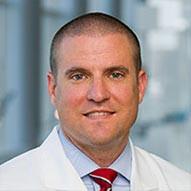Cloacal Anomaly
Babies born with complex bowel and pelvic conditions need care from a team of specialists. At Children's Health℠, our pediatric surgeons, urologists, gynecologists and gastroenterologists work together to provide the surgery and care they need to thrive. We’re one of the few pediatric hospitals in the U.S. that brings these specialists together in one center to care for all your child’s needs.
What is a cloacal anomaly?
A cloacal abnormality is when the urinary tract, rectum and vagina merge together to form a common channel that exits the body through one opening. This a rare abnormality that develops in baby girls during the early stages of a pregnancy.
Babies born with a cloacal abnormality have a single opening where the urethra would typically open. The opening is often hooded and elongated. Cloacal abnormalities can have other signs and symptoms depending on where the urinary tract, rectum and vagina merge together.
If these tracts merge together close to the opening, the newborn doesn’t have a visible anus (opening where stool leaves the body). These babies have a short common channel, which allows stool and urine to easily leave the body.
In other cases, the three tracts merge together farther away from the opening. This longer common channel makes it more difficult for stool and urine to leave the body. These cases are more complex, and these babies often have urinary tract infections.
Babies with a cloacal abnormality may also have:
A malformed anus
A clitoris that looks more like a penis
Reproductive organs, bladder, rectum and/or muscles in the pelvis that are not fully developed
A blockage (obstruction) in the vagina
More than one vagina and/or cervix
Some babies may also have other problems with their spinal cord, heart or arms and legs.
How are cloacal anomalies diagnosed?
A doctor will examine your baby right after birth to make a diagnosis. Though cloacal anomalies can sometimes be seen on prenatal ultrasounds during pregnancy, it’s difficult to make a definitive diagnosis until the baby is born.
After diagnosis, our team of experts will perform imaging tests so they can better understand the specifics of your child’s condition. These may include:
X-rays
Ultrasound
Endoscopy, which means your baby goes under anesthesia and doctors use a small tube to view inside the common channel
Once a cloacal anomaly is diagnosed, your baby will need other work up to look for other related birth defects:
What causes cloacal anomalies?
At this time, it's not known what causes cloacal abnormalities or how to prevent them. The condition is very rare and occurs in about 1 in 25,000 newborn baby girls.
How are cloacal anomalies treated?
All cloacal anomalies require surgery at some point. Your child's treatment plan will depend on the type and severity of their condition.
Immediate treatment
The immediate goal of treatment is to make sure urine and stool can leave your child's body. Some babies may be able to empty urine and stool through the single opening, but will still need a surgical procedure called a colostomy that diverts the stool away from the urinary tract so that poop comes out through the abdominal wall into a bag instead. For some babies, urine might build up in the vagina and cause blockage of the urinary tract. In these situations, they may need a catheter to drain urine and sometimes may need a surgical procedure called a vaginostomy to drain urine out of the vagina. It is important to ensure urine is draining properly to prevent kidney damage.
During this time, your baby receives around-the-clock care in our nationally ranked Level IV NICU. As your baby grows and becomes stable, doctors will begin to plan for reconstructive surgery.
Once your baby is safely eliminating stool and urine, then the care team will want to ensure that baby is healing from surgery and growing well.
Reconstructive surgery
Between the ages 6 months and 12 months, your baby will have surgery to separate their urethra, vagina and rectum. Cloacal anomalies can have many variations, and it requires extensive planning leading up to surgery. It may take additional endoscopy or Xray procedures to better define the anatomy when your baby is bigger before your team of surgeons would want to perform reconstructive surgery.
Sometimes the surgery can be performed only through the bottom, but more severe anomalies may require surgery through both the bottom and the belly.
It is typical that after reconstructive surgery, your baby would still have a colostomy in order to protect the repair from stool. It will require another surgery later to close the colostomy.
Follow-up care
Our team continues to provide any care your child needs throughout childhood. This can include treatment for:
Constipation or stool accidents through a personalized bowel management program
Nutrition and growth
Urinary leakage, urinary tract infections, and kidney disease
Reproductive concerns that your child may have as she approaches puberty
Psychological coping
It is important that your child continues to follow up with a multidisciplinary team of experts for coordinated care throughout her childhood and adolescence. She may have problems with different issues at different stages of life related to being born with a cloacal anomaly.
Pediatric Cloacal Abnormality Doctors and Providers
At Children's Health, we have a team of experts with experience treating cloacal abnormalities. Together, we provide the highest level of care for your child and family. Our team approach also means that you can see all the specialists your child needs at their clinic appointment.
 Dai Chung, MDPediatric Surgeon
Dai Chung, MDPediatric Surgeon Craig Peters, MDPediatric Urologist
Craig Peters, MDPediatric Urologist Adam Alder, MDPediatric Surgeon
Adam Alder, MDPediatric Surgeon Shane Batie, MDPediatric Urologist
Shane Batie, MDPediatric Urologist Nathalie Brewer, MDPediatric Surgeon
Nathalie Brewer, MDPediatric Surgeon Alexandra Carolan, MDPediatric Urologist
Alexandra Carolan, MDPediatric Urologist Natasha Corbitt, MDPediatric Surgeon
Natasha Corbitt, MDPediatric Surgeon Diana Diesen, MDPediatric Surgeon
Diana Diesen, MDPediatric Surgeon David Ewalt, MDPediatric Urologist
David Ewalt, MDPediatric Urologist Barbara Gaines, MDPediatric Surgeon
Barbara Gaines, MDPediatric Surgeon Lauren Gillory, MDPediatric Surgeon
Lauren Gillory, MDPediatric Surgeon Michele Gifford, MDPediatric and Adolescent Gynecology
Michele Gifford, MDPediatric and Adolescent Gynecology Russell Hawkins, MDPediatric Surgeon
Russell Hawkins, MDPediatric Surgeon Charles Hong, MDPediatric Surgeon
Charles Hong, MDPediatric Surgeon Micah Jacobs, MDPediatric Urologist
Micah Jacobs, MDPediatric Urologist Jason Jarin, MDPediatric Gynecologist
Jason Jarin, MDPediatric Gynecologist Alejandro Llanos Chea, MDPediatric Gastroenterologist
Alejandro Llanos Chea, MDPediatric Gastroenterologist Stephen Megison, MDPediatric Surgeon
Stephen Megison, MDPediatric Surgeon Carrie Moore, MDPediatric Surgeon
Carrie Moore, MDPediatric Surgeon Joseph Murphy, MDPediatric Surgeon
Joseph Murphy, MDPediatric Surgeon Samir Pandya, MDPediatric Surgeon
Samir Pandya, MDPediatric Surgeon Laura Purcell, MDPediatric Surgeon
Laura Purcell, MDPediatric Surgeon Faisal Qureshi, MDPediatric Surgeon
Faisal Qureshi, MDPediatric Surgeon Rinarani Sanghavi, MDPediatric Gastroenterologist
Rinarani Sanghavi, MDPediatric Gastroenterologist Bruce Schlomer, MDPediatric Urologist
Bruce Schlomer, MDPediatric Urologist Irina Stanasel, MDPediatric Urologist
Irina Stanasel, MDPediatric Urologist Sharon Kluger, APRN, PNP-AC/PCNurse Practitioner - Pediatric Surgery
Sharon Kluger, APRN, PNP-AC/PCNurse Practitioner - Pediatric Surgery
Frequently Asked Questions
Will my baby have complications from cloacal anomaly throughout their life?
Will my child be able to potty train?
Resources
Urology Care Foundation
 , the official foundation of the American Urological Association
, the official foundation of the American Urological Association